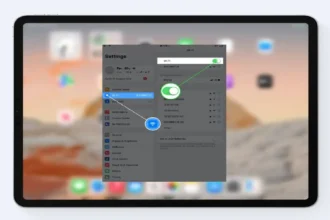On Valentine’s Day 2023, T-Mobile iPhone users stuck in ‘SOS’ mode. Apple’s iOS includes an emergency SOS option that can be activated by navigating to Settings > Cellular > Emergency SOS. Try switching to a 2G or 3G network if there is still no signal despite the coverage map showing adequate coverage.
Earlier, DownDetector was showing 30000 and now the reports jumped to 80000 for iPhone Stuck on SOS mode on T-Mobile. Since the rapid growth of T-Mobile iPhone users for T-Mobile service not working and stuck at Emergency SOS, the official T-Mobile team responded that “we are aware of and rapidly working to resolve an issue that has created intermittent impacts to our voice, messaging, and data service in several areas for a short period of time this evening.”
Why iPhone Stuck At SOS Mode With T-Mobile?
There could be a few reasons why T-Mobile is not working for you, including:
- Outage: T-Mobile’s service may occasionally encounter temporary outages, which can result from different factors, including maintenance work, technical issues, or high network traffic.
- Coverage: If you experience connectivity problems, it’s possible that T-Mobile’s coverage is limited in your area. To determine whether your location has sufficient coverage, you can consult T-Mobile’s coverage map.
- Device: Your device might be the source of the problem, whether due to a software issue or hardware malfunction. To troubleshoot, try restarting your device and see if that resolves the issue.
- SIM card: If you’re experiencing connectivity issues, the SIM card may be damaged or improperly inserted. To address this, try removing the SIM card, cleaning it, and re-inserting it.
Even though T-Mobile is still working to fix T-Mobile SOS Mode on iPhone, here we have some working solutions to get rid of this error.
How To Fix iPhone Stuck in T-Mobile SOS Mode
1. Check T-Mobile cellular network:
Ensure that you are in a location with cellular network access. To find out if there are any known outages in your area, you can check the coverage maps of your mobile network provider. This can help you determine whether the issue is related to a lack of cellular service in your area or a problem with your device or SIM card.
2. Check T-Mobile Carrier Settings Update:
If you’re experiencing weak or no signal, you can check the T-Mobile coverage map to see if your area has adequate coverage. To further troubleshoot, reset your device’s network settings and verify that your T-Mobile Carrier Settings are up-to-date. You can also try disabling Wi-Fi to ensure that your device is using the T-Mobile network for cellular data.
3. Check T-Mobile Network Status:
To check the status of T-Mobile’s network, you can visit their website or use the T-Mobile app to see if there are any reported outages or maintenance activities affecting your area.
4. Restart your iPhone:
Occasionally, restarting your iPhone can help to fix problems related to network connectivity or software glitches. To restart your device, hold down the power button until you see the “slide to power off” option appear. Slide the slider to turn off your device, then press and hold the power button again to turn it back on.
5. Disable Low Power Mode:
If your iPhone is in Low Power mode, it may affect the performance of Emergency SOS. To disable Low Power mode, go to ‘Settings’ > ‘Battery’ and toggle off the ‘Low Power mode’ option.
6. Enable Airplane mode:
Sometimes, toggling Airplane mode on and off can help reset your network connection. To do this, go to the Control Center by swiping down from the top right corner of your screen, then tap the airplane icon. Wait a few seconds, then tap it again to turn it off.
7. Enable Data Roaming:
If you’re traveling outside of your home network, make sure that Data Roaming is enabled in your phone’s settings to ensure that you have access to cellular data. To do this, go to “Settings” > “Mobile data” > “Mobile data options” > “Data Roaming” and make sure it is toggled on.
8. Verify your SIM card:
Your SIM card may be the source of network connectivity issues. Make sure it is inserted correctly and activated by your network provider. To do this, you can try taking the SIM card out, wiping the contacts with a soft cloth, and then reinserting it.
9. Update your iPhone:
Keeping your iPhone’s software up to date is important for maintaining network connectivity and fixing software bugs. To check for updates, go to “Settings” > “General” > “Software Update” and follow the instructions to download and install any available updates.
10. Reset network settings:
If you continue to experience network-related problems, try resetting your network settings. This will erase all saved network connections and reset network-related settings to their default values. To do this, go to “Settings” > “General” > “Reset” > “Reset Network Settings” and confirm the action. Note that you will need to re-enter any Wi-Fi passwords or VPN settings after performing this action.
Conclusion
T-Mobile iPhone users experienced a network failure on February 14, 2023, which resulted in their devices being stuck in SOS mode. While T-Mobile works to resolve the issue, users can try various troubleshooting methods, such as checking the network coverage, carrier settings update, and network status, restarting their device, disabling low power mode, enabling airplane mode, data roaming, verifying the SIM card, updating their iPhone, and resetting network settings. These solutions can help resolve connectivity issues and fix software or hardware malfunctions.





